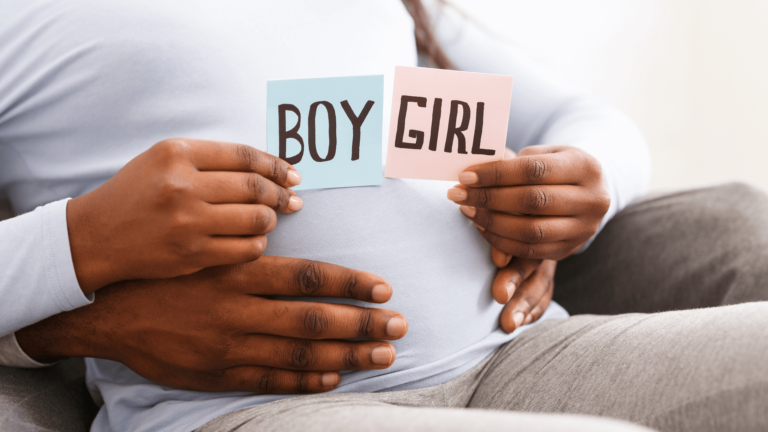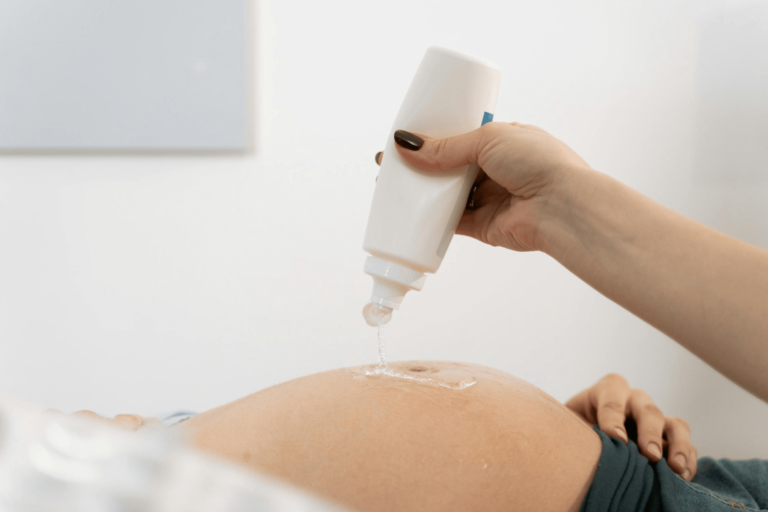Signs You’re Having a Girl: Debunking Myths and Exploring Science

Pregnancy is an exciting journey filled with many surprises, and one of the most anticipated revelations is the sex of the baby. While some parents eagerly wait for medical confirmation, others enjoy the fun of old wives’ tales that claim to predict whether they’re expecting a boy or a girl. If you’re curious about these myths, especially those hinting at having a girl, read on as we explore popular beliefs and what science says about them.
1. Carrying a High Bump
Myth: If your bump sits high and you can’t tell you’re pregnant from behind, you’re having a girl.
Truth: The position of your bump is influenced by your body type, muscle tone, and the baby’s position. It’s not a reliable indicator of your baby’s sex.
2. Your Eyes Don’t Dilate
Myth: Stare into a mirror; if your pupils don’t dilate, it’s a sign you’re having a girl.
Truth: Pupil dilation is more about light conditions and your body’s response to them. There’s no scientific evidence linking pupil dilation to the baby’s sex.
3. Baby’s Heartbeat Faster than 140 BPM
Myth: A heartbeat faster than 140 beats per minute indicates a girl.
Truth: While there’s some belief in this myth, studies have shown no consistent link between fetal heart rate and sex.
4. Severe Morning Sickness
Myth: Experiencing intense morning sickness in the first trimester means you’re having a girl.
Truth: Morning sickness varies greatly among pregnancies and doesn’t reliably predict the baby’s sex.
Also read: What Science Says About ‘Signs’ You’re Having A Girl?
5. Dull Yellow Urine
Myth: Dull yellow urine suggests you’re having a girl.
Truth: Urine color is influenced by hydration levels, diet, and supplements, not the sex of the baby.
6. Craving Sweets
Myth: Craving sweet foods means you’re expecting a girl.
Truth: Cravings are influenced by hormonal changes and personal preferences, not the baby’s sex.
7. Left Breast Larger than Right
Myth: If your left breast is bigger than your right, it’s a sign of a girl.
Truth: Breast size changes are due to hormonal fluctuations and are not linked to the baby’s sex.
8. Sleeping on Your Right Side
Myth: Waking up on your right side indicates you’re having a girl.
Truth: Sleep position is about comfort and habit rather than an indicator of the baby’s sex.
9. Increased Breakouts and Oily Skin
Myth: Oily skin and breakouts mean a girl is on the way.
Truth: Skin changes are common in pregnancy due to hormonal shifts and are not specific to the baby’s sex.
10. Presenting Hands Palm Up
Myth: Showing your hands palm up when asked indicates you’re having a girl.
Truth: This is more about personal habits and has no basis in determining the baby’s sex.
11. Moody Disposition
Myth: Feeling extra moody suggests you’re having a girl.
Truth: Mood swings are common in pregnancy due to hormonal changes and are not indicative of the baby’s sex.
12. Carrying Weight Around the Middle
Myth: Gaining weight around your middle means you’re having a girl.
Truth: Weight distribution during pregnancy varies and is influenced by numerous factors, not the baby’s sex.
13. Odd Number Combination
Myth: If the sum of your age at conception and the month you conceived is odd, you’re having a girl.
Truth: This is a fun mathematical myth with no scientific backing.
14. Feet Haven’t Grown
Myth: If your feet haven’t grown during pregnancy, it means you’re having a girl.
Truth: Feet swelling or growing is influenced by fluid retention and other factors, not the baby’s sex.
15. Softer Skin
Myth: Softer skin overall indicates you’re having a girl.
Truth: Skin texture changes due to increased blood flow and hormonal changes, not the baby’s sex.
16. Ring Test
Myth: If a ring on a necklace swings side to side over your bump, you’re having a girl.
Truth: This is a fun old wives’ tale with no scientific basis.
17. Warm Feet
Myth: If your feet don’t get cold easily, it suggests you’re having a girl.
Truth: Circulation changes can affect foot temperature, but not the baby’s sex.
18. Eating Garlic Without Smelling
Myth: Eating garlic without smelling of it means you’re having a girl.
Truth: Body odor after eating garlic varies among individuals and has no correlation with the baby’s sex.
19. Stress at Conception
Myth: Feeling stressed at conception means you’re having a girl.
Truth: Stress levels can affect many aspects of health but are not an indicator of the baby’s sex.
20. Forgetfulness
Myth: Extra forgetfulness means you’re having a girl.
Truth: “Pregnancy brain” is common and due to hormonal changes, not the baby’s sex.
21. Chinese Gender Predictor Tool
Myth: The Chinese gender predictor tool can tell you if you’re having a girl.
Truth: This tool is based on folklore and has no scientific validation.
22. Linea Nigra
Myth: If your linea nigra stops at the belly button, it’s a girl.
Truth: The linea nigra’s length is not an indicator of the baby’s sex.
23. Avoiding Bread Crusts
Myth: Not eating bread crusts means you’re having a girl.
Truth: Bread crust preferences are about taste, not the baby’s sex.
24. No Swollen Ankles
Myth: Not having swollen ankles indicates a girl.
Truth: Swelling is influenced by fluid retention and other factors, not the baby’s sex.
Scientific Methods to Determine Baby’s Sex
While old wives’ tales are fun, they lack scientific backing. Here are some science-based methods to accurately determine your baby’s sex:
Noninvasive Prenatal Testing (NIPT)
Performed around week 10, this blood test screens for genetic disorders and can accurately determine the baby’s sex.
Chorionic Villus Sampling (CVS)
Conducted between 10 and 12 weeks, this test involves sampling placental tissue to check for chromosomal abnormalities and the baby’s sex.
Nuchal Translucency (NT) Scan
This ultrasound, performed around 12 weeks, screens for chromosomal abnormalities. Occasionally, the baby’s sex can be determined during this scan.
Amniocentesis
Usually done between 15 and 18 weeks for high-risk pregnancies, this test involves analyzing amniotic fluid for chromosomal abnormalities and can reveal the baby’s sex.
Mid-Pregnancy Ultrasound
Typically performed between 18 and 22 weeks, this detailed ultrasound can often determine the baby’s sex.
Conclusion
While old wives’ tales about predicting a baby’s sex are entertaining, they lack scientific support. For those eager to know their baby’s sex, relying on medical testing and scans is the most accurate approach. Enjoy the myths for what they are—fun stories—while trusting science for the truth.
FAQs
1. Can the shape of my bump really indicate my baby’s sex?
No, the shape and position of your bump are influenced by your body type and the baby’s position, not their sex.
2. Is there any scientific basis for the heart rate myth?
Studies have shown no consistent link between fetal heart rate and the baby’s sex.
3. Do pregnancy cravings indicate my baby’s sex?
Cravings are more about hormonal changes and personal preferences than the baby’s sex.
4. Can stress at conception determine my baby’s sex?
There’s no scientific evidence supporting this myth. Stress affects health but not the baby’s sex.
5. How accurate is the Chinese gender predictor tool?
The Chinese gender predictor tool is based on folklore and has no scientific validation.






